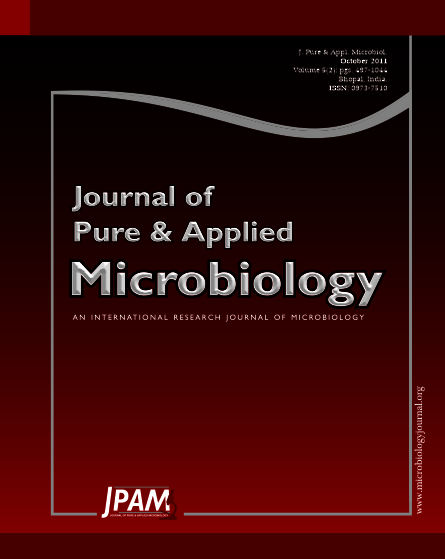Effects of iron deficiency (10 µM) and excess (50-100 µM) conditions, causing oxidative stress, on enzymatic and non-enzymatic antioxidants, also lipid peroxidation (LPO) were investigated in blue-green cyanobacterium, Spirulina maxima depending on time. Increasing iron concentration in the medium resulted in increases in intracellular iron levels. Uptakes of iron and magnesium indicated positive correlation, whereas Mn levels in deficiency condition showed a similar trend with control and increased in excess conditions. While catalase activity wasn’t observed in all conditions, the highest superoxide dismutase and ascorbate-dependent peroxidase activities were determined in 50µM on 13th day. However, chlorophyll contents in deficiency condition were similar to control up to 13th day, they were over control in excess conditions. Then, they tended to increase in all conditions except control. Phycocyanin contents in deficiency condition up to 7 day were slightly lower than controls’ though significantly higher than it in excess conditions. Then, phycocyanin levels for control were determined over all conditions, except 17th day, for excess conditions. Ascorbate and total carotenoid contents showed similar, but converse trends, depending on iron concentration except control. Control’s LPO levels indicated insignificant change, yet they in other conditions were higher than control’s and showed decreasing variations during time.
Spirulina maxima, Phycocyanin, Superoxide dismutase, Ascorbate-dependent peroxidase, Lipid peroxidation, Iron
© The Author(s) 2011. Open Access. This article is distributed under the terms of the Creative Commons Attribution 4.0 International License which permits unrestricted use, sharing, distribution, and reproduction in any medium, provided you give appropriate credit to the original author(s) and the source, provide a link to the Creative Commons license, and indicate if changes were made.


